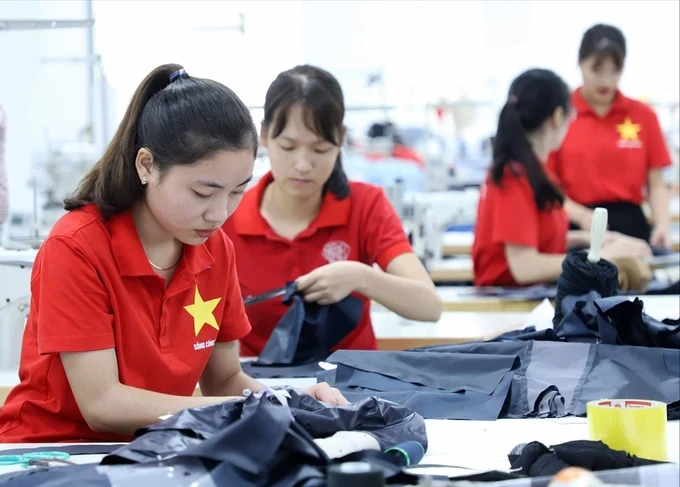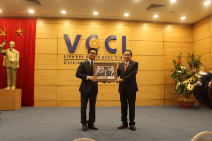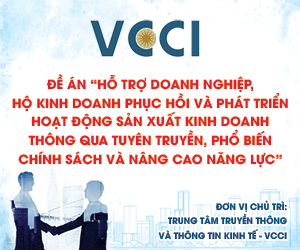State-owned enterprises: Balancing national duty with market demands
Vietnam’s transfer of state-owned enterprises (SOEs) to the Ministry of Finance signals a push for reform, aiming to improve efficiency and contribution to national growth amidst evolving economic policies.

“Locomotives” losing steam
Recent discussions between Prime Minister Pham Minh Chinh and the heads of these once-formidable SOEs, often referred to as the nation’s “steel fists”, revealed a complex picture.
Vietnam currently oversees more than 670 SOEs, with roughly two-thirds wholly owned by the State and the remainder holding a majority stake. The fully state-owned sector controls approximately 7 percent of the nation’s total assets and 10 percent of its equity, based on data from 2021-2023. These enterprises contribute around 28 percent to the national budget and employ 7.3 percent of the workforce.
In 2024, 78 leading SOEs generated nearly VND1,700 trillion (US$65.9 billion) in revenue, a 38-percent increase from the previous year. However, their 2025 targets, including a revenue goal of VND1,100 trillion ($42.6 billion) and pre-tax profits of VND109.339 billion ($4.2 billion), suggest a cautious outlook.
SOEs continue to play a pivotal role in strategic sectors like oil and gas, telecommunications, banking, and transportation, commanding a substantial 60-70-percent market share in some areas.
Amidst the pressures of international economic integration and the demands of a modern market economy, many SOEs have embarked on significant restructuring efforts, adopting contemporary governance standards to enhance transparency and capital efficiency.
Key financial metrics, such as ROA (return on assets) and ROE (return on equity), have shown improvement in some pivotal SOEs, generally hovering around 6-8 percent for ROA and 10-12 percent for ROE, indicating a relatively stable capacity to convert capital into profit.
However, as the Prime Minister pointed out, the contributions of SOEs are unevenly distributed, heavily reliant on a few major players like PetroVietnam and Viettel. Many others are struggling to demonstrate significant growth and have yet to become substantial drivers of national development.
Dang Quyet Tien, Director of the Accounting and Auditing Department and former Director of the Corporate Finance Department at the Ministry of Finance, emphasized the crucial stabilizing role of SOEs during economic downturns.
He cited the example of the petroleum sector, where SOEs are forced to absorb losses to maintain market stability, a luxury not afforded to private enterprises. Similarly, in the electricity sector, SOEs bear a dual burden, as Dr Nguyen Duc Kien, former head of the Prime Minister’s Economic Advisory Group, aptly put it. Ironically, while some private companies aspire to operate with the stability of SOEs, the SOEs themselves often yearn for the operational flexibility of their private counterparts.
Policy as catalyst for change
The SOEs are facing a formidable mission for 2025, navigating a complex landscape of evolving policy frameworks (including the replacement of Law 69/2014/QH13) and organizational restructuring mandated by government directives, which includes the dissolution of the State Capital Management Committee. They must simultaneously address existing challenges, drive restructuring initiatives, and ensure robust production and business performance to contribute to national growth.
Deputy Prime Minister Ho Duc Phoc outlined key priorities for 2025, tasking the Ministry of Finance with overseeing the implementation of restructuring plans for SOEs. This involves swift approval of restructuring plans by relevant agencies, ensuring legal compliance.
Meanwhile, supervising ministries must finalize SOE classification criteria for 2026-2030, reporting to the Prime Minister. The State Bank of Vietnam is urged to expedite bad debt resolution, emphasizing decentralized management with strict oversight. The overarching strategy advocates for minimal state intervention in SOE operations, favoring timely problem-solving.
Experts suggest SOEs must actively contribute to policy-making, proposing mechanisms that maximize resource use and enhance global competitiveness. They should lead in environmental commitments, transitioning to clean energy. This aims to ensure SOEs remain pivotal to Vietnam’s economic development, adapting to modern market demands and international standards.
As the nation’s leading entities, entrusted with substantial resources, SOEs must also demonstrate leadership in fulfilling emission reduction commitments made at COP26 and COP28, spearheading the transition to clean energy and carbon reduction.
The evolution of the SOE sector
- 1975-1986: Era of Centralized Planning:
The economy was structured around a centrally planned model, with SOEs playing a dominant role in all major economic activities, from production to services, to facilitate post-war reconstruction.
- 1986-1990: Dawn of Reform:
Vietnam began its transition to a market-oriented economy, prompting SOEs to focus on efficiency, transparency, and competitiveness. This led to internal restructuring to shift from a centralized to a mixed economic model.
- 1990-2000: Restructuring and Equitization:
SOEs underwent extensive reforms, including equitization, commercialization, and management restructuring, to foster competition and improve performance. Government agencies issued directives to regulate SOE operations.
- 2000-Present: Modernization and Global Integration:
SOEs continued to modernize their governance structures, emphasizing professionalism and transparency. International economic integration required SOEs to adapt to global competition, with many transitioning to joint-stock companies and adopting modern management practices, especially in strategic sectors like energy, transportation, telecommunications, and finance.








